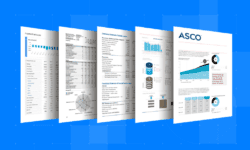Worldwide economies have faced plenty of crises before the COVID-19 pandemic. Most notably, the emerging market collapses of the late 1990s and the Global Financial Crisis (GFC) of 2008, both left national economies reeling, many taking years, even decades, to recover.
Still, the pandemic has presented an added component not seen by the modern, connected global economy. The health crisis forced economic shutdowns, eliminated travel and had no predictable timeline by which the world’s financial decision-makers could definitively forecast economic recovery.
Central banks played a key role in the stabilization of economies in the midst of the crisis, and as we approach its end, their decisions continue to serve as indicators of what’s next. Likewise, emerging markets, whose fates over the past year depended on a wide variety of factors, are remarkably diverse in the status of their current economic health and their outlooks for the future.
Here’s what central banks are currently telling us about emerging markets.
- In more than a decade, central banks in emerging markets are beginning to raise interest rates, signaling the end of the most extended easing cycle.
- Established market credibility was the differentiator in whether or not central banks in emerging markets could implement bold measures to stabilize their economies.
- Central banks in emerging markets are looking closely to the U.S. for indicators of investor risk sentiment and likely impacts on their capital inflows and outflows.
The Easing Cycle is Ending
Between 2019 and the start of 2021, central banks in emerging markets saw the longest easing cycle since the GFC. At its peak in March 2020, 27 of 37 emerging market central banks cut interest rates as an economic protection measure in the midst of unprecedented market uncertainty due to the onset of the pandemic.
Now, the tide is beginning to change.
Spring 2021 brought more interest rate hikes than the total of 2020 due to concerns about rising inflation as the global recovery continues to gain momentum approaching what looks to be the tail-end of the COVID-19 crisis.
According to Reuters, five net interest rate hikes across emerging markets occurred in March 2021, followed by four more in April and another in May.
While many larger emerging economies are considering current inflation indicators transitory, they aren’t taking any chances. For example, the Banco of México raised its benchmark rate from 4% to 4.25% at the end of June, preceded by raises by Brazil (up to 4.25%) and Russia (gradually raised to its current 5.5%). More are expected to follow.
Credibility is the difference.
Credibility has proven key in emerging markets’ ability to navigate the challenges presented by the COVID-19 crisis. Those who had a healthy economic outlook before the pandemic and a proven track record could take bolder, more innovative, and more impactful measures to combat the market downturn of 2020 and get on the road to a faster recovery.
One prominent example is the government bond- and asset-buying strategies employed by emerging markets over the past year. At least 18 central banks have implemented their own versions of quantitative easing by implementing asset-purchase programs, including emerging-market countries like Chile, Poland, Hungary, the Philippines, and Ghana.
So far, the results have been positive — the International Monetary Fund (IMF) reports that bond yields have been reduced by 0.2 to 0.6 percent with little effect on domestic currencies, as investors have viewed central bank purchases as catalysts rather than threats.
But these and other tactics can’t be successfully employed without established trust on the market, as exemplified by Turkey. IDespitepromises from Turkey’s central bank and government, investors relinquished their lira-denominated government bonds to curb inflation and build reserves.
It’s a challenge that, according to experts, is hard to overcome for any country:
“Weak growth credibility is a problem that is very hard to shake off,” says David Lubin, head of emerging markets at Citigroup, Inc.
It has been a hard-learned lesson for less-established emerging market economies over the past year. One positive outcome? Emerging market leaders will almost certainly carry this lesson with them as we advance with a new appreciation for the importance of establishing economic health in less volatile times.
All eyes are on the U.S.
It’s no secret that U.S. monetary policy reverberates globally. Emerging markets specifically feel the impacts as central banks eye interest rate trends, inflation indicators, and investor risk sentiment, preparing for ways these combined factors will affect the flow of capital in and out of their economies.
U.S. stimulus spending has created capital inflows to international economies as Americans spend money on imported goods in the absence of available experiences like concerts, sporting events, and travel. At the same time, low-interest rates have tempered risk aversion to emerging market investments, keeping many emerging market economies stable.
Could impending inflation bring an end to these stabilizing effects?
AlphaSense recently did a deep dive into what leaders across financial industries have to say about it. While the commentary is nuanced by field, the common theme is that while stimulus measures were necessary, inflation is inevitable, and the risks must be accounted for.
As for emerging markets, they’d undoubtedly feel the ripple effects.
The fear is that a decision by the Federal Reserve to raise interest rates earlier than expected could cause a similar effect as the taper tantrum of 2013 when investors spiraled into panic following the Fed’s announcement that they would reduce their bond purchases.
“This would pose major challenges, especially to middle-income countries with large external financing needs and elevated debt levels,” said IMF Managing Director Kristalina Georgieva.
Predicting the outcome
While there are no perfect ways to predict market behavior, it is clear that the world’s economies are heading toward a new phase of the COVID-19 crisis: post-pandemic.
Questions remain around the exact ways decisions in developed markets will affect emerging markets or how lessons from previous crises will fully play a role in strategies employed as part of recovery efforts worldwide.
As the answers unfold, the actions of central banks will continue to provide insight into the health and trajectories of the world’s emerging market economies.
Interested in learning about other emerging trends in a post-pandemic world? Join nine Morgan Stanley analysts across three sessions as they discuss six emerging themes after COVID. Access the on-demand replays now.



